Presented by:

While 2020 and first-half 2021 were overwhelmingly challenging for oil and gas producers, it had been difficult even in 2019 for Oklahoma producers.
Many rely on decent—at least—natural gas and NGL prices in addition to a decent oil price.
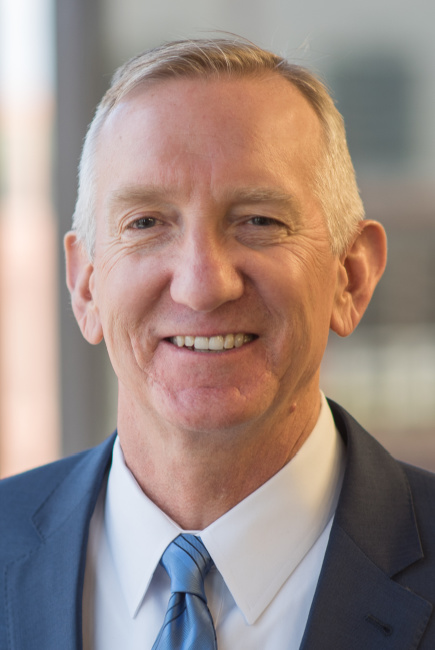
Exiting 2020 and into 2021, natural gas and NGL prices became better than decent, though. Some 60 rigs were drilling in the Anadarko Basin this past December, up from about 23 as 2021 began and about 40 pre-COVID, according to Enverus’ count.
The Anadarko Basin and the Haynesville play (also 60) were the only two in the Lower 48 to post a higher rig count exiting 2021 than pre-COVID.
In the Midcontinent’s hot spot—the SCOOP/ STACK/Merge fairway—there had been as few as about nine rigs at work at the bottom, said Ward Polzin, CEO, Camino Natural Resources LLC. “So we’ve dramatically improved.”
Denver-based Camino was among the few producers who continued to drill. It has three rigs at work; Citizen Energy III LLC has four. Polzin said, “We’re the two largest [Oklahoma] privates and doing more out there than many of the largest operators other than Continental [Resources Inc.].”
As major SCOOP/STACK/Merge-driven M&A for leasehold has settled in the past half-decade, remaining operators are harvesting their minerals somewhat quietly. The late 2010s produced a slew of bankruptcies as the eastern reach of the STACK play didn’t pan out.
Tim Helms, CFO of Tulsa-based Citizen Energy III, said, “Where people have painted Oklahoma with a broad brush from past poor-performing companies in the basin, there’s a lot to be said about the successes we and others have had both technically and financially here, and the business case for continued investment in the region.
“The asset is a great one and one that, in the right hands, can generate a great profit.”
Over at Camino, Polzin said, “Everybody’s happy. We get the growth, do it all within cash flow and dividend back to our owners.”
Camino paid $90 million to private equity partner NGP’s investors in 2021. “We’re not taking new equity, we’re not taking new debt, we can grow production at 10% a year with [our] three rigs, still keep debt below 1.0x EBITDA and still dividend significant money back to NGP,” Polzin said.
“This basin really works.”
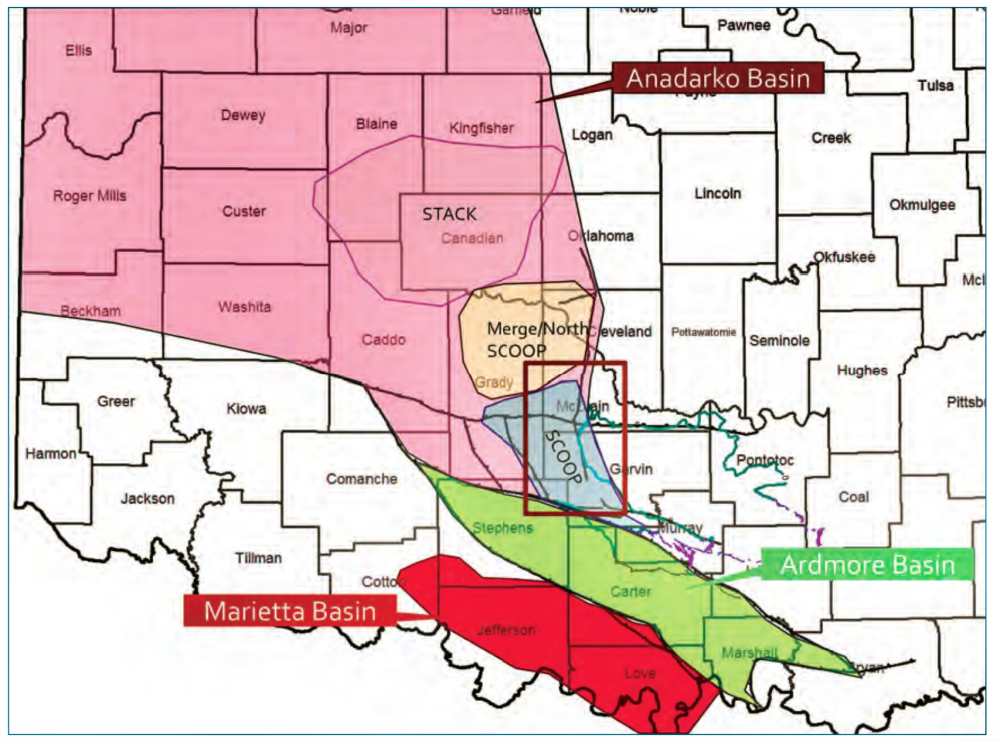
What’s driving it?
The commodity mix in the Anadarko Basin can be 1:1:1 oil, gas and NGL. While the gas content drives greater oil recovery, basin economics need strong prices.
A perception about the basin has been, “That place is too gassy,” Polzin said. “But you get more gas because we have a lot more pressure in the system and, therefore, a lot more productivity from the wells.”
It’s a lower oil content than, say, the Permian Basin, “for sure. But, on an absolute basis, during a well’s first year, we get about 85% of the oil out than a Midland well gets out. And we get five times the gas.”
The NGL composite price—natural gasoline, isobutane, butane, propane, ethane— was about $12/MMBtu in early 2014 as the SCOOP, STACK and other new Oklahoma plays were appearing, according to Energy Information Administration (EIA) data.
Propane at Mont Belvieu on the Texas coast, for example, was about $1.60 a gallon.
But the NGL composite fell to less than $4 two years later, according to EIA data, while crude oil also plummeted.
NGL rebounded to about $11 in mid-2018 and began tumbling again to about $4 preCOVID. Crude oil was still more than $50 at the time. But, depending on where an Oklahoma well is producing, oil might be only a third of production.
By April of 2020, NGL was less than $3. Natural gas was less than $2. Propane was less than 25 cents—a low not seen since before this century, according to the EIA.
In late 2020, NGL began to rebound, finding more than $10 by this past fall and settling in there into year-end.
MARIETTA BASINDrilling continues in the Marietta Basin, primarily by Exxon Mobil Corp. unit XTO Energy Inc. The major reported this past spring that its Marietta-Woodford, Ardmore and Arkoma basins’ holdings produce 26,000 bbl/d of liquids and 178 MMcf/d net. Working interest ranges from 70% to 80% on its more than 300,000 net acres. It had one rig drilling the Marietta Basin at year-end. Another operator, Trailhead Exploration LLC, was drilling as well. Seth Urruty, president of Oklahoma operator Camino Natural Resources LLC, said XTO continued drilling the Marietta through the pandemic. “It’s a fascinating basin. It’s similar to the Ardmore position [Camino has]. It’s not as vast in areal extent and depositional extent. It’s relatively localized.” XTO dominates in the deep core where there is significant overpressuring. “So they’re expensive wells, a lot of long days drilling,” Urruty said. Total vertical depth can be more than 15,000 ft, but the production is robust. “It’s an interesting area. But for Camino it’s a bit challenging in terms of competing for capital for now.” |
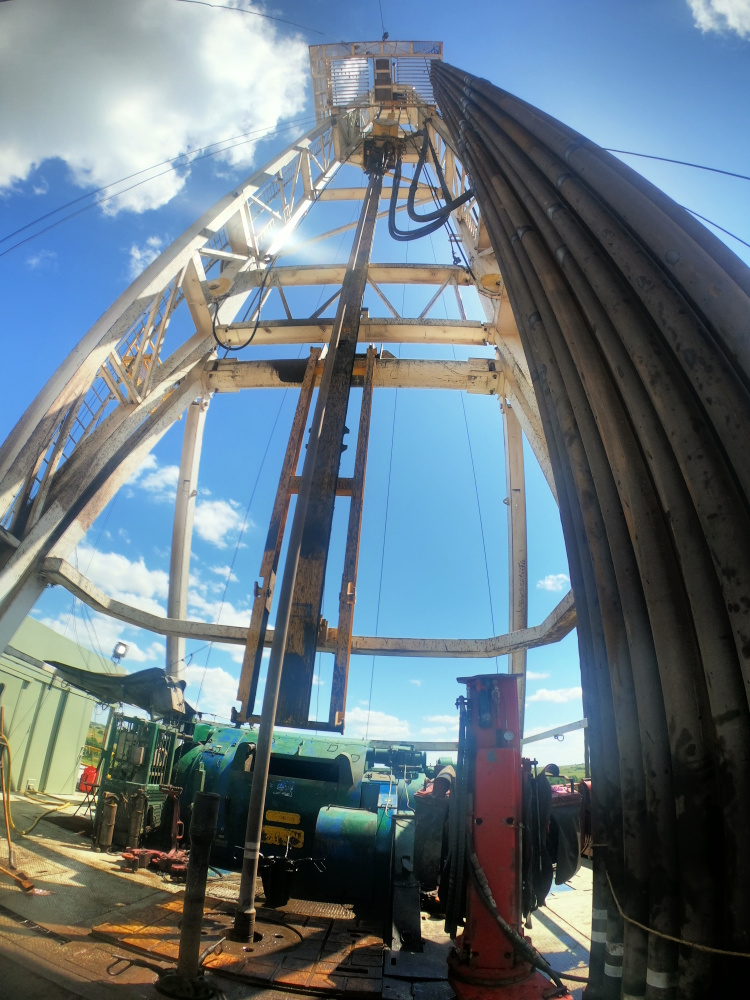
A 1,500 bbl/d NGL well
Camino was formed to focus on Oklahoma with a first acquisition in 2017. Seth Urruty, president, said, “The previous high mark was at the end of 2018. We were in a kind of downward realized price market all through 2019, all through 2020.”
Camino has leasehold throughout the central Oklahoma fairway for the SCOOP, STACK and Merge. It’s focusing one of its rigs currently on the far southern end in what’s being called “South SCOOP.”
The gas is 1,200 Btu to 1,400 Btu. “When we’re looking at $3 natural gas, we’re thrilled to death, quite frankly,” Polzin said. “And then $4 and $5 gas is just kind of off the charts.”
Urruty said a $1 bump in natural gas and a $5 to $8 bump in NGL, makes margins “double, triple, quadruple quickly from how low we were.”
Camino is getting between $35 and $40 for its NGL per barrel now. “Most of our wells IP at 1,000 to 1,500 barrels in NGL per day. So it’s a huge contribution.”
For natural gas, a Camino well may come in with between 2 MMcf and 20 MMcf a day. A typical well is 6 million to 8 million a day. The eastern side of its leasehold is oiler; the western, gassier.
The wellhead yield is typically between 150 bbl and 200 bbl per MMcf of NGL. “It’s a real positive and unique to this play at these depths and pressures. The NGL yields are really high,” Urruty said.

“We have some wells with initial flowback of over 2,000 barrels. It’s a really unique high-pressure rate with substantial NGL production.”
‘They make hole’
Citizen Energy’s assets are entirely in Oklahoma as well—some 240,000 net acres, about 97% HBP, producing some 70,000 boe/d.
“We’re Anadarko Basin specialists, if you will,” Helms said. “We’ve got a lot of years of expertise operating in this area.
“We’re not against going to other areas, but this is where we’ve had a lot of success.”
Backed by Warburg Pincus, its focus is primarily in the Merge at the intersection of the Stack north and the Scoop south, assembled largely by privately held Citizen Energy II. That iteration merged its assets with those of Linn Energy LLC to form publicly held Roan Resources LLC in 2017. The Citizen team bought Roan out in 2019 and took it private as Citizen Energy III.
Of its four rigs at year-end, three were at work in the Merge; one, in the STACK. At the time, it wasn’t drilling in its SCOOP leasehold.
Revenue is about a third gas, third NGL, third oil, Helms said. So higher natural gas and NGL prices “help, for certain.”
Having leasehold throughout central Oklahoma, “we do like the diversity we have that gives a lot of flexibility to move rigs to the location that best suits the conditions at the time—whether it be prevailing prices for gas versus oil or vice versa.”
For Citizen, moving a rig northeast that’s updip will get it more oil; south and west, more gas. “We span the gamut of phase windows from dry gas on our far western flank, as you get to the deepest depth of our position, all the way up to a pretty heavy oil concentration on the other side of the play.”
The company minds that it isn’t pushing the envelope far. “I would say we’re probably not the most exciting from a new technology standpoint. We stay with the tried and true,” Helms said.
As it’s worked the region for more than a decade now, “we’ve optimized frack design and we’ve optimized landing zones, etc., to minimize cost and improve productivity and hit that inflection point as best we see fit.”
Cost control has resulted in sustained, continuous activity in the basin by putting fewer dollars at risk for any given well, he said.
“A lot of the technologies that we see out there may work great in other areas. We’ve got rigs that aren’t the newest and shiniest, but they make hole,” he said. “And the dayrate is very competitive.”
The team is seeing higher steel prices in the field. But dayrates haven’t escalated as much yet, he said.
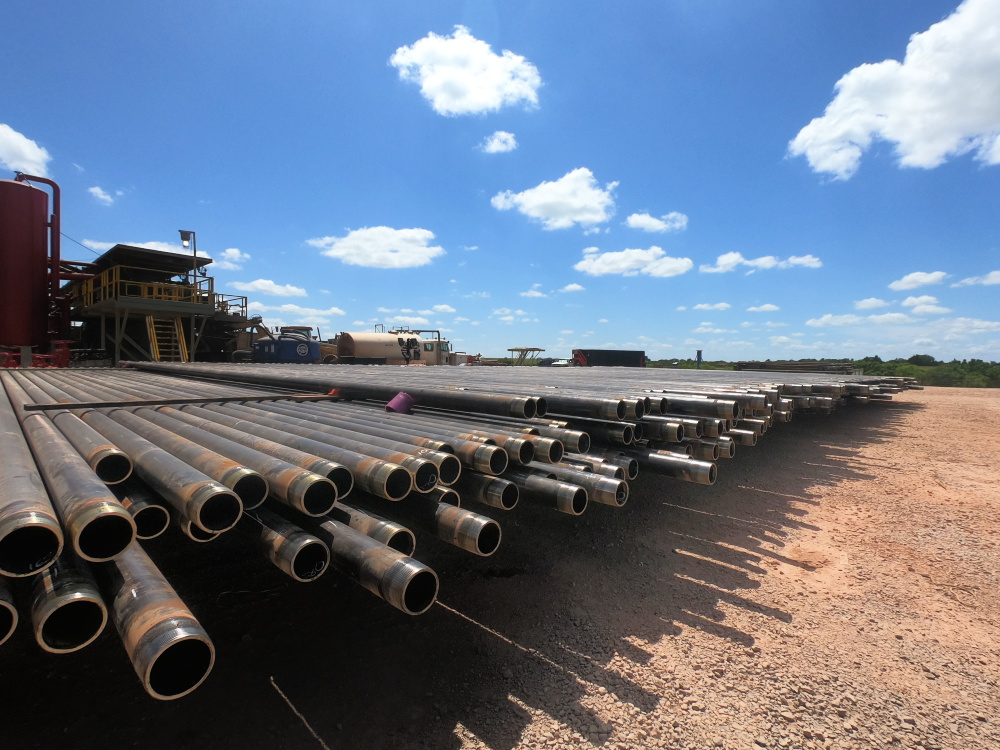

Adding midstream
Citizen looks at adding leasehold “as it makes sense. We’ve done a few different acquisitions over the years.”
In Oklahoma, “competitors” for leasehold are “actually really great partners. We work with each other pretty effectively in trading in and out of acreage to improve our own net interest and vice versa.”
Still, “we win some and lose some.” But Citizen sticks to its valuation. “I think we won’t ever get out of our skis from paying for acreage,” Helms said.
Meanwhile, though, “we do have about a decade’s worth of inventory at our four-rig cadence. So there’s no need for us to [buy].”
Something it did purchase in 2020 was one of its primary midstream providers, Blue Mountain Midstream LLC, giving Citizen an integrated system, including gas-gathering and -processing infrastructure.
“That’s really improved our operating margins as well.”
Camino has taken a stake in its midstream partner too, Iron Horse Midstream, which has a 225 MMcf/d plant in the middle of the SCOOP/STACK/Merge in Grady County and more than 250 miles of gathering.
Urruty said, “That gives us a lot of seethrough into how our residue gas is marketed. And we have a lot of input and collaboration on what we’re doing on the NGL side.
“That’s allowed us to gain access to markets that we thought were going to be favorable and, it turns out, have been more than favorable.”
Upstream, Camino took in a central Delaware Basin operation that had been held by Luxe Energy LLC, another member of the NGP portfolio, in 2020. Luxe was sold in 2021 to Colgate Energy Partners III LLC, which is part of the Pearl Energy Investments and NGP portfolios, for equity.
In Oklahoma, Camino took in NGP member 89 Energy II LLC.
Camino’s founding assets were purchases of Ward Petroleum Corp.’s SCOOP position and Chesapeake Energy Corp.’s Merge position, as well as those of NGP portfolio companies Rebellion Energy II LLC and 89 Energy LLC, both operators in the Merge and SCOOP.
(At press time, Reuters reported Colgate is preparing to file its S-1 to IPO. Luxe co-founder Lance Langford has formed Langford Energy Partners LLC. And Kayne Anderson Energy Funds consolidated three Anadarko Basin portfolio companies into newly formed 89 Energy III LLC.)
McGIRTThe U.S. Supreme Court declined in November to reconsider its 2020 decision in the case of McGirt vs. Oklahoma. In that, the court ruled that most of the eastern half of Oklahoma is ruled by the state’s tribes. Oklahoma Gov. Kevin Stitt had requested reconsideration at the recommendation of his Commission on Cooperative Sovereignty, chaired by Devon Energy Corp. co-founder Larry Nichols and including Continental Resources Inc. founder Harold Hamm and The Williams Cos. president and CEO Alan Armstrong. In 2020, the Oklahoma Corporation Commission ordered that it reigns over oil and gas activities on the Five Tribes’ land. Tim Helms, CFO of Tulsa-based producer Citizen Energy III LLC, told Oil and Gas Investor that Citizen’s properties aren’t within the disputed area. “But, certainly, there are ramifications for” others. “It hasn’t directly affected us. But it’s something we’re obviously keeping a close eye on.” Meanwhile, the governor’s brother, Keith, has filed suit that a speeding ticket he received can’t be heard by the Tulsa municipal court, citing the McGirt ruling, according to Tulsa World. The Stitt brothers are members of the Cherokee Nation, having at least one ancestor who was a tribe member. Keith Stitt’s attorney, meanwhile, is a member of the Pawnee Nation. Cherokee Nation Attorney General Sara Hill told Tulsa World in January of sorting out the go-forward plan, “I hope we’re at the acceptance phase of the process. |
‘Perception’
Polzin said the challenge for the Anadarko Basin “is just perception.” There are three reasons why it’s been negative, starting with that several operators went bankrupt. “So markets thought the SCOOP, STACK and Merge must be bad, right?”
But “100% of these bankruptcies were not in the core of the play,” he added. They were in what was hoped to be an economic STACK extension north of the core.

“Those areas up there are not as core,” Polzin said. “And why are they not core? They have lower pressure and they have thinner source rock. You just don’t get the quality of well.
“I think people got misled that those bankruptcies from the noncore were indicative of the core.”
Another source of a negative view among generalist investors is that operators were, naturally, looking early on for what number of wells could be put in a drilling spacing unit (DSU) for the best rate of return.
“We the industry assumed we could drill 10 to 16 wells per DSU among the zones. And, just like in every other basin, we the industry assumed too much.”
Many pads were overdrilled. Camino and others have determined that DSUs are best with between six and eight wells. With that recipe, “our parent/child relationship is great,” Polzin said.
“We’re limiting the impact on the parents with these child wells. We just have to space it correctly.”
The third source of a poor image is generalist investors’ misunderstanding of the benefits of the strong volume of central Oklahoma’s solution-gas drive.
“The SCOOP/STACK/Merge is a combo play—oil, gas, NGL. It’s not all oil, and it’s not all gas. It’s a little bit of everything,” Urruty said.
And it comes with access to markets—oil to Cushing; NGL to Conway, Kan., and Mont Belvieu; and gas to local markets and west, north and south, all “at a pretty low differential.”
“We sell gas to [Gulf Coast LNG] liquefaction companies as well,” Urruty said. “Oklahoma’s in a really good position in terms of infrastructure that’s already built out.”
Overall, the past six or more months “have exceeded the highest wellhead realized dollar for wet gas that we’ve seen. The previous high mark was at the end of 2018.”
2,000 bbl/d Ardmore
Camino’s net production is some 50,000 boe/d, more than 90% operated, from 90 wells. Its roughly 150,000 net acres are throughout central Oklahoma.
2022 estimated field-level cash flow is some $450 million. After paying $90 million in dividends in 2021, Camino estimates distributing between $150 million and $200 million this year.
Continuing its three-rig program is expected to grow production between 10% and 15% per year. Camino has more than 20 years of inventory. At $55 oil and $2.75 gas, its top 300 locations in inventory are estimated to bring a roughly 95% IRR; another 700-plus locations would generate more than 20%.
The current leasehold has some 180 DSUs and “a very small number of those are fully developed,” Urruty said.
“We have, in my mind, the cleanest fairway of undeveloped acreage in the core and as much remaining inventory on that core fairway as anybody in the basin—public or private.”
The leasehold stretches from Blaine and Kingfisher counties down to Love in the Marietta Basin. It had a rig in late 2021 drilling in Canadian and Grady counties in the Anadarko Basin and one at the intersection of Stephens, Garvin and Carter counties in South SCOOP in the Ardmore Basin.
South SCOOP is Continental Resources Inc.’s southern extension of its Springboard project. That far south, the primary operators are just Camino and Continental, each with one rig. Also operating there are Citation Oil & Gas Corp. and Cheyenne Petroleum Co.
Camino has drilled nine wells in the Ardmore to date. The last two that were brought online each averaged 30-day IPs of 2,000 bbl/d. “Not boe,” Polzin said. “That’s 2,000 barrels of oil.”
To date, the wells appear to also have a flatter decline rate.
“The Ardmore’s a perfect example where you have a lot of oil and actually a lot less gas. Our GORs [gas-oil ratio] down there are relatively low.”
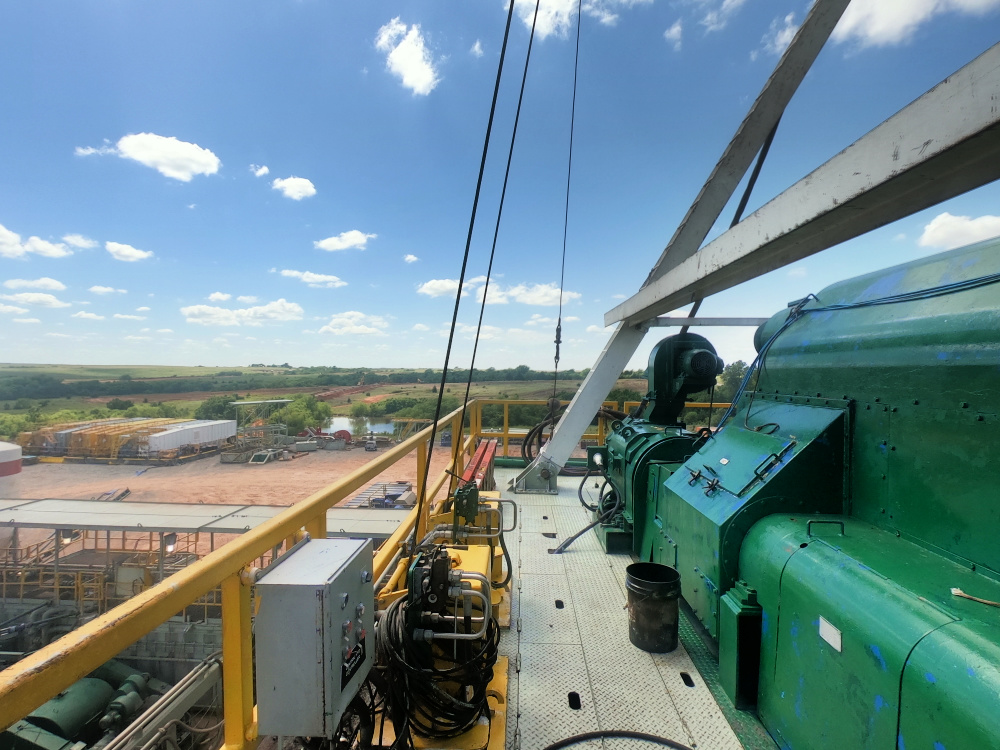
‘Dial it in’
In Oklahoma, “you can kind of dial it in,” Urruty said, depending on the hydrocarbon that’s getting the best price. “It’s a little bit of everything in Oklahoma.”
Citizen’s Helms said, “Oklahoma has a rich heritage of being a great oil- and gas-producing region. We have seen more than our fair share of people come and go in the basin and not have financial success.”
As the state’s most active private operator, “I think [Citizen has] a well-established track record of proving that the asset is a great one and one that, in the right hands, can be managed effectively and generate a great profit.”
Camino’s Polzin added, “Our wells are getting better. Not every well’s better than the one before, but the next five are better than the previous five.”
Camino has “just kind of quietly turned into a big private company. And life’s pretty good.”
Recommended Reading
Matador Exits Eagle Ford Shale, Preps for ‘Turbulent Times’
2025-04-04 - Matador Resources Co. divested its Eagle Ford Shale assets “in preparation for turbulent times” but doesn’t expect tariffs to affect well costs until the second half of 2025.
Appalachia, Haynesville Minerals M&A Heats Up as NatGas Prices Rise
2025-04-03 - Several large Appalachia and Haynesville minerals and royalties packages are expected to hit the market as buyer interest grows for U.S. natural gas.
RPC Acquires Pintail Completions to Expand Permian OFS Operations
2025-04-03 - RPC Inc. paid $245 million in cash and other considerations for the wireline service provider.
TotalEnergies Grows Renewables Portfolio with Project Acquisitions
2025-04-03 - TotalEnergies has entered into deals with RES, VSB Group and SN Power for assets in North America, Africa and Europe.
INEOS Buys CNOOC’s Gulf Assets, Bringing US Deals Total to $3B
2025-04-02 - INEOS Energy closed an acquisition of U.S. Gulf assets held by a CNOOC subsidiary. Combined with a previous LNG agreement and acquisition of Eagle Ford Shale assets, the British company has spent $3 billion in the U.S.
Comments
Add new comment
This conversation is moderated according to Hart Energy community rules. Please read the rules before joining the discussion. If you’re experiencing any technical problems, please contact our customer care team.






